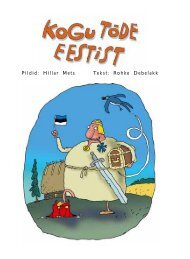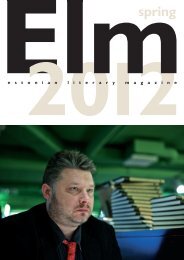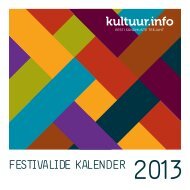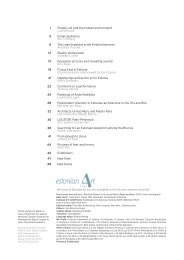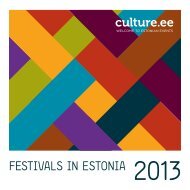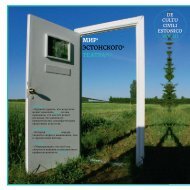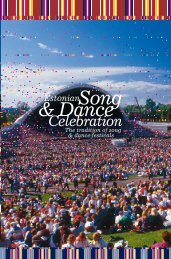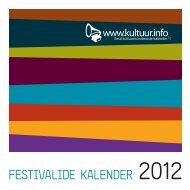FACTS ABOUT ESTONIA
FACTS ABOUT ESTONIA
FACTS ABOUT ESTONIA
Create successful ePaper yourself
Turn your PDF publications into a flip-book with our unique Google optimized e-Paper software.
<strong>ESTONIA</strong>NFLAG6The Estonian flag was born in thenational-romantic student circlesof the University of Tartu during thefinal quarter of the 19th century.The blue, black and white tricolourwas consecrated by the members ofthe Society of Estonian Students inOtepää on 4 June 1884.Due to the enmity of both the localBaltic German nobility and Russiancentral government, opportunities forflying the tricolour openly were quitelimited. However, the colours weresoon adopted not only by the Estonianstudents but by the whole nation.To celebrate the 120th anniversary of itsconsecration, the original Estonian flagwas again displayed in St Mary’s Churchin Otepää.The political significance of the flagwas further strengthened during thedemonstrations of the 1905 RussianRevolution and confirmed during theFebruary Revolution in 1917, whenthe Estonians managed to merge theirethnic territories in the neighbouringprovinces of Estland and Livland intoa single autonomous administrativeunit – the Estonian Governorate.The Declaration of Independence in1918 was, quite naturally, announcedunder blue, black and white banners.There are several interpretations ofthe national colours. According tothe most popular, blue represents thereflection of the sky in the lakes andthe sea, thus symbolising endurance:“until the skies last”; black stands forthe colour of the traditional greatcoatof an Estonian man or for the earththat feeds its people; white marks thedesire for light and purity.Throughout the occupations, from1940 till the end of the 1980s, theSoviet authorities sought to ban theuse of the blue, black and white colourset in any form.Yet, the colours lived on in the freeworld. In late September 1944 manyEstonians left their country in orderto escape Bolshevist persecution andlarge exile communities were foundedin Sweden, Canada, Australia andthe USA. The expatriates preservedthe flag and other national symbolsand promoted their use at everyopportunity.A symbol of resistance: an Estonian flaghidden in the wall of the headmaster’soffice at Kildu Primary School during theStalinist persecution in the 1940s, andfound in 2004.The return of the national colours inthe late 1980s was spontaneous andsteady. Starting in earnest in 1988,the civil movement that later becameknown as the Singing Revolution alsorestored the blue, black and white flagto the public domain.The flag was once again hoisted atthe top of the Tall Hermann tower ofToompea Castle on 24 February 1989.In 1991, the then almost centenarianoriginal of the Estonian national flagwas brought out from its hiding placeunderneath a stove in a farmstead nearJõgeva, where it had been concealedsince 1943. This banner is thus amongthe very few extant original nationalflags in the world.



